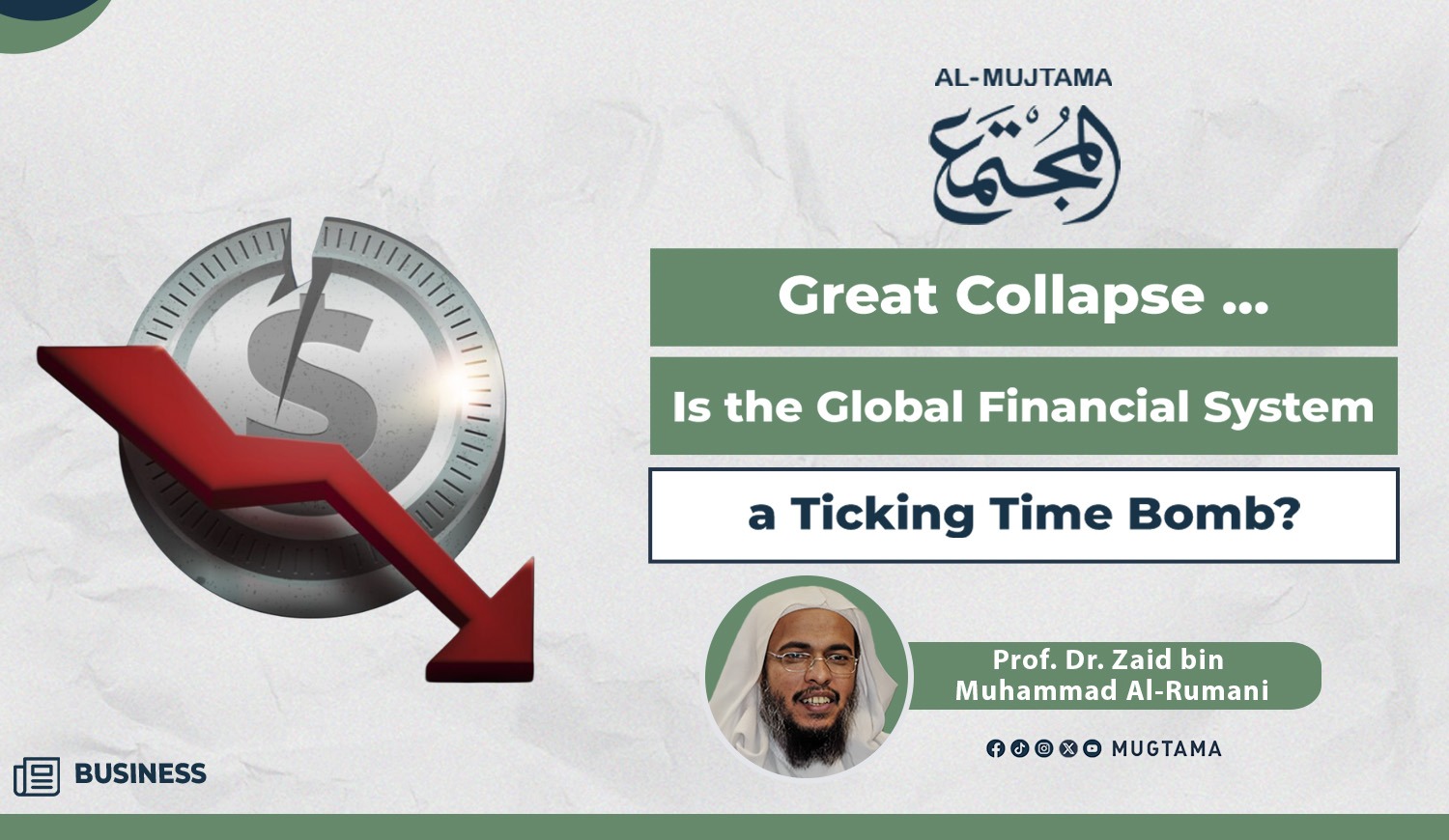Great Collapse… Is the Global Financial System a Time Bomb?

Despite our daily concern with financial
matters and the hard work most of us put into earning money, we need to pause
for a moment to realistically reflect on the true nature of money, and what it
means in today’s world.
There is no doubt that many
people—including those working in the financial sector—often fail to grasp the
precise concept of money and the reality that it comes from nothing, created in
the form of credit that is difficult to understand. This small but dangerous
secret is not taught in most economic schools, and only a small circle of
financial insiders are aware of it.
Willem Middelkoop, author of The Big Reset, says: “Just one year
before the collapse of Lehman Brothers, my first book was published in the
Netherlands under the title If the Dollar Collapses – 2007. After
studying the financial system for more than a decade, I came to the conclusion
that the collapse of the shaky global financial system and its accumulated
debts was only a matter of time.”
And indeed, just one year after this paper
house collapsed, his life changed drastically, and he became well known. He
therefore decided to leave his job as a financial market commentator and focus
on the commercial opportunities emerging from the new economic reality. He
realized that this reality would be tempting for investors to seriously
consider investing in tangible assets, especially gold and silver. This is
nothing new—historical precedents exist in every crisis over the past three
hundred years.
From the Gold Standard to Digital Money Printing
Before the outbreak of World War I, most major currencies were backed by gold.
That was the era of the gold standard, in which the supply of money was
constrained by the growth of gold reserves. But the growing need of European
states to finance the massive costs of the war pushed them to abandon the gold
standard in the second decade of the twentieth century, so they could print
more money. Most of those states, along with many others, replaced the gold
standard with a paper money system.
Middelkoop reveals that, in order to
counter the economic fallout from the credit crisis, countries unleashed their
fiscal deficits dramatically, covering their mounting bills by selling huge
amounts of government bonds. But as increasing numbers of investors stopped
buying these bonds, governments turned to the only option left: switching on
the digital printing presses. Using this method, central banks purchased the
accumulated debts and government bonds, amounting to a total of $10 trillion
worldwide between 2008 and 2013.
The
Nuclear Option: Debt Monetization
Economists describe this process as “debt monetization” by central banks.
Specialized economic literature refers to this measure as “the nuclear option,”
which should be resorted to only when no other financing methods are available.
It is easy to start this process but impossible to stop it.
Unfortunately, universities worldwide
continue to promote the ideas of the Chicago School of Economics, whose
doctrine is based on producing paper money by central banks in collaboration
with private banks. Even today, our students still study economic textbooks
built on outdated market models. Perhaps this explains why so many economists
and journalists lack a full understanding of the role of money in our current
economy.
Inevitable
Failure of the Monetary System
Middelkoop says: “It is true that I am not handicapped by lacking a bachelor’s
degree in economics, but I rely on sound understanding of the principles of
money. I have diligently studied books on money and economic crises written by
historians. Based on that, I can say that the current crisis was predictable by
reviewing six thousand years of documented monetary history. In the end, we
must regard the potential failure of the current monetary system as a
statistical inevitability rather than a theoretical improbability.”
He goes on to emphasize: “Politicians will
realize, when faced with the abyss, that only a major fundamental change—which
I have called The Big Reset—can save the global monetary system. And
there is no doubt that they will come to this realization once they stand
helpless in the face of refinancing their mountains of debt.”
-------------------------------------------------------------
Read Also:
-
Shattering the Myth of Global Economic ruin without Usury











